November 10, 2006
UCF: Toronto Cybercide
Movie Review By: SFAM
Year: 2006
Directed by: Laszlo Kovacs, Andrew Hookway (Co-Director)
Written by: Laszlo Kovacs
Degree of Cyberpunk Visuals: Low
Correlation to Cyberpunk Themes: Medium
Key Cast Members:
- Sue: Sylvia C. Andreae
- Jazz: Andrew Hookway
- Marshall Pax: Bryan Patrick Stoyle
- Cash: Laszlo Kovacs
- The Nemesis: Justin Monk
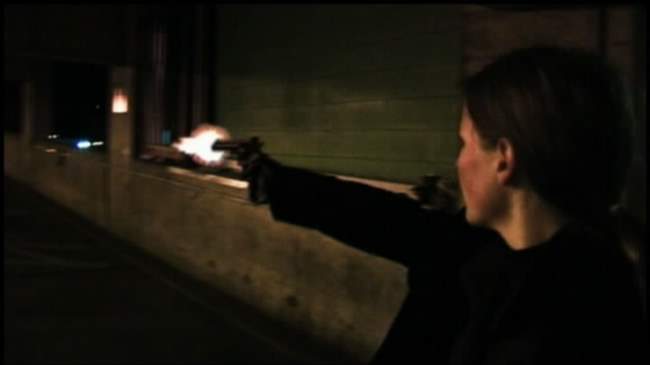
Overview: UCF: Toronto Cybercide is an attempt to create a 70s style police show done up in futuristic cyberpunk. This is a production done by an enterprising group of amateur film makers called Key Pixel: Gathering of Filmers. As a review, this is a slightly different review than many I have done previously, in that I fully realize that this movie is no-budget, and is produced by highly motivated, but amateur film makers. I had previously decided not to give it a star rating, but the more I thought about it, the more it made sense to consider it in many ways as I have the rest. This review will spend more time than most on details of what I thought really worked well, along with what I felt really needed improvement.
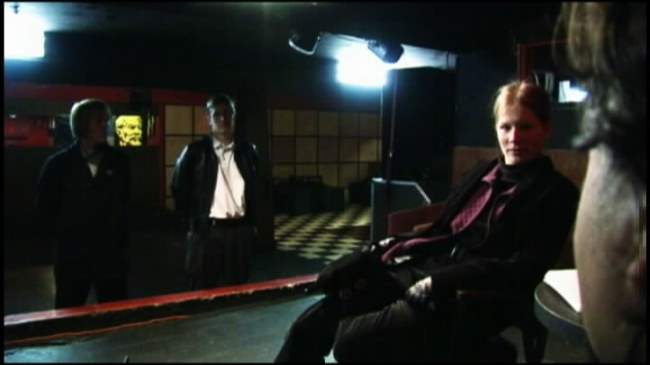
The Story UCF: Toronto Cybercide takes place over 70 years into the future. Some aspects of society have collapsed, but the police are still on the job. A team of detectives, Sue (played by Sylvia C. Andreae), a tough action chick with a cybernetic arm and Jazz (played by Andrew Hookway), an emotive family guy, are sent to investigate some strange cyber deaths, and end up getting involved in a “good cyborg gone bad” story. Here to assist with the investigation is the almost-human Marshall Pax, a cyborg from the Unified Cybernetics Foundation. Together they must root out mafia involvement and stop the Nemesis (played by Justin Monk - and what cool name for an actor!) from randomly killing Toronto’s inhabitants.
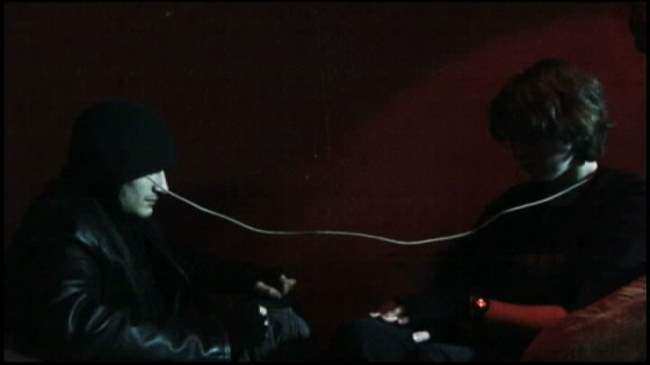
Narrative Issues: The underlying idea for Toronto Cybercide (70s cop show done in cyberpunk) is very interesting in scope, and if executed well, provides enough grist for cyberpunk enthusiasts to sink their teeth into some neat concepts. While some aspects worked well, there were a few key scenes that really could have significantly improved the overall experience.
- The Introduction: While the text was interesting, the way it was implemented made it virtually impossible to get the context. The text wasn’t sequential, and each line started at a different time. This meant that you had to almost go back and rewind for each line to complete and then try to piece it together to figure out what was happening. Even then, we miss out on why the future still has CRT monitors, current model cars, modern phones and 1940s phones together, etc. The luddites are mentioned, but really only in passing.
- Transition leading up to the final battle: The transition leading up to the final battle is virtually nonexistent. There really should have been a scene or two leading up to how and why all three parties came together. All we are given is that a trap has been sprung by the mafia, and that the police magically seem to know where.
- Why don’t we get to see the Nemesis? The bulk of the complexity in character development involves the Nemesis, but unfortunately we rarely get to see this. To the extent he shows up, we get no sense of the internal conflict taking place within the Nemesis. Toronto Cybercide really could have benefited from two scenes (one near the beginning, and one after the kitchen scene) that explored this conflict.
- Why is the Cyborg eating regular food? One of the challenges here was in trying to make the Marshall otherworldly. The kitchen scene gives a good opportunity to show him eating a fabricated food source. Instead, he is eating milk and cake.
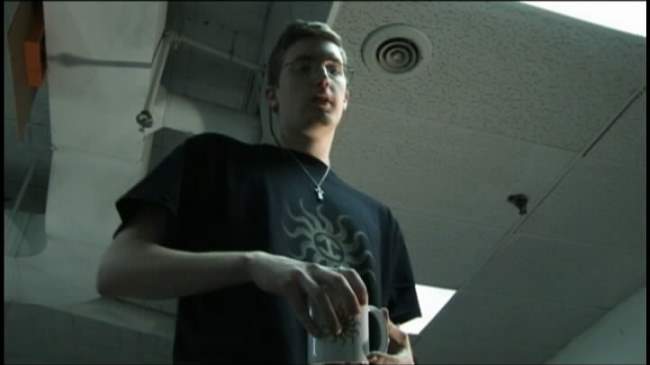
The Cinematography: Kovacs strong point seems to be in constructing some interesting visuals and textures. While many scenes were average, every now and then we’d get a terrific perspective shot, or angle which really added to the context of the scene. Toronto Cybercide is definitely at its best when going for a noir feel. Grays, blacks, overexposed whites and reds worked FAR better than the background soft yellow scenes. And while some scenes were exceptional, others, such as the dust scene sorely detract from the suspension of disbelief. Like the sound, consistency in crafting is definitely advocated.
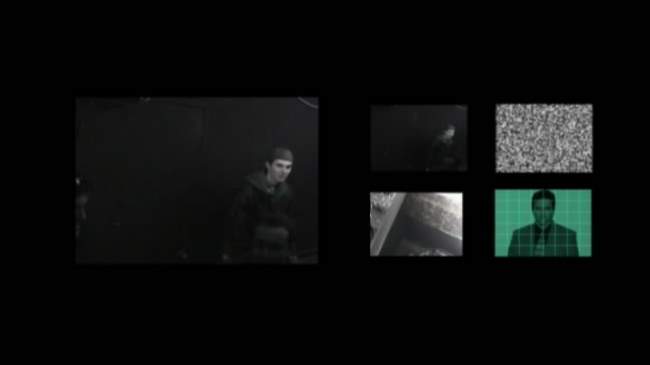
The FX: The FX is very low budget, in sort of a Dr. Who sort of way. For the most part, it works though. The laser gunshots were decent enough, and while the cybernetic arm could have been better, Andreae (Sue) worked it very effectively in the action scenes to the point that it was very believable. Perhaps the coolest one, as was pointed out on the directors commentary was the knife in the book in the Club Red scene – this just worked wonderfully and really helped sell Sue’s strength. Also terrific though was the Luddite TV screen - this more than any other FX scene left a sense of a different time and place.
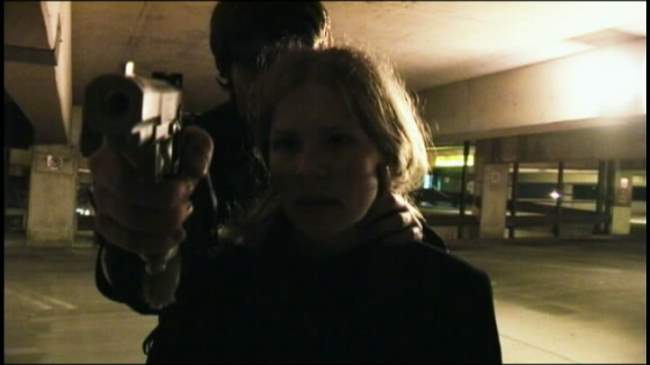
The Editing: For the most part, the visual editing in Toronto Cybercide really works. The pacing is solid, and most all of the investigation and action scenes work. In particular, the early battles and chase scenes really held together well, while the last fight scene came across as a tad too haphazard. The only early shot that really stuck out as wildly problematic was a quick camera jerk near the beginning when the long-haired minion was bitching about following “his part of the deal.” This could have been spliced a bit to become more workable.
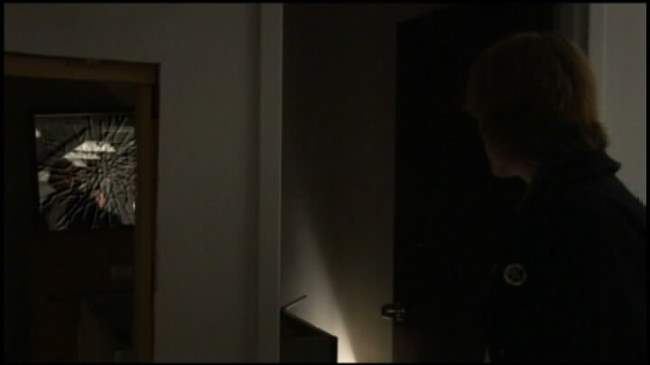
The Acting: The acting in Toronto Cybercide is far from top notch – then again, this is to be expected in an amateur production. As a clear standout, Bryan Patrick Stoyle as Marshall Pax turns in a very credible performance as a stoic, post-human cyborg. More problematic were the two cops, Sylvia Andreae and Andrew Hookway. Part of the issue is they are attempting to be your traditional 15 year, jaded cop types – this was just a hard sell both due to their age, and unfamiliarity with jaded cop stuff. From a narrative perspective, their performance would be greatly aided had it been set up that most cops had already been wiped out, and that these were junior cops thrust into events greater than they were experienced to handle. This would have played far better to their age, character development and overall performance. If there was one change I would make though, it would be eliminating Kovacs’ Matrix Merovingian nod – that scene in the Club Red CLEARLY indicates how good an actor Lambert Wilson in the Matrix sequels really is. Kovacs’ acting works well in most scenes, but that dialogue stretch will get a deservedly horrid groan from all viewers.
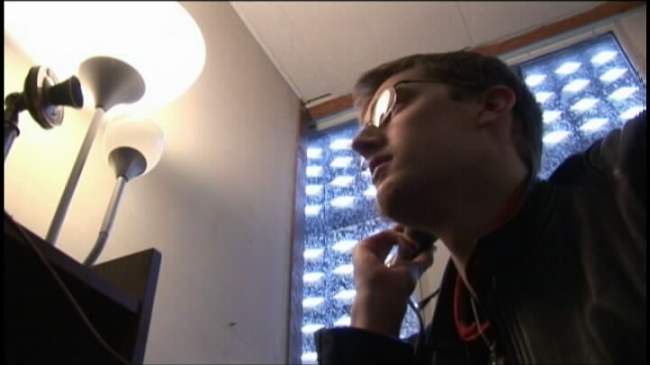
The Music: For the most part, the electronic music accompaniment is one of the best crafted aspects of Toronto Cybercide, and adds well to the mood of many scenes. Simple movement music, such as the background for the train station scene, work wonderfully to pick up the pace. The best use of sound accompaniment was probably the emotive flashbacks that Marshall Pax. The worst was definitely the ending battle. There the music was sort of a slow, ongoing, day to day sound for a scene that needed high tension, fast paced accompaniment.
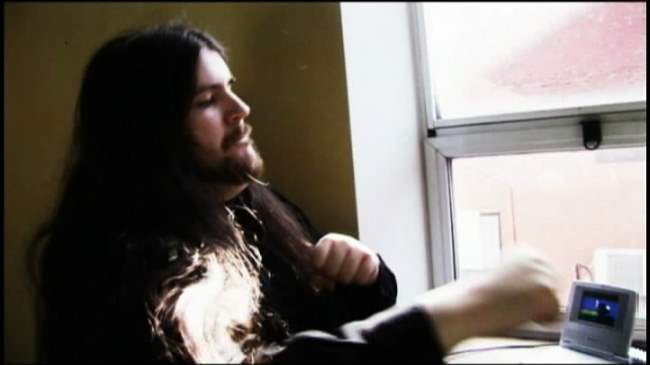
The Sound: The sound in Toronto Cybercide is sometimes great, sometimes horrid. In most scenes, we get either great background sounds or solid transfer’s of action from the left to right speakers, that carefully mimic the movement of those on-screen. These, when combined with the fast-paced electronic background accompaniment really add to the moment. In some scenes, the mix clearly needs LOTS more work – all too often the levels seem to shift dramatically, especially with the inclusion of needless white noise (the kitchen scene is probably the worst instance of this). Far worse though was a scene near the beginning - we even get an ultra-loud, high pitch sound that dominates the speakers for no particular reason – this occurs a time or two later as well. Aside from this though, clearly a lot of work to the sound FX
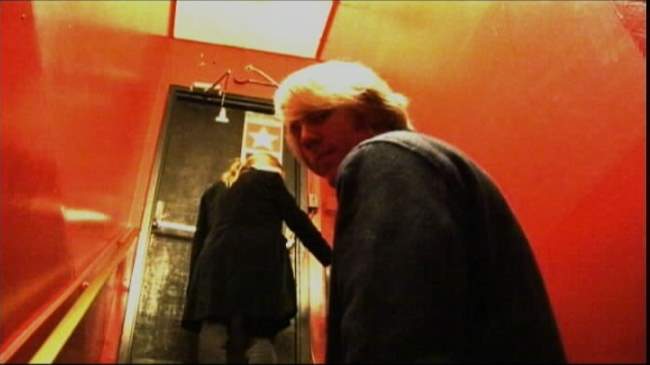
Creating a Cyberpunked World Without A Budget: One of the real challenges that Kovacs and company deal with is creating a futuristic cyberpunked world on no budget. I must applaud them for making an attempt such as this, and truly hope to see more efforts such as this. Their challenge is especially problematic in that they are basically stuck with their local surroundings. Kovacs often addresses this by almost attempting to do sort of a staged play approach, where most scenes take place in barren rooms - the audience is left to fill in the details for themselves. He also attempts retrograde technology approaches, such as using 1940s phones for communications. And while some of the scenes work well, there is clearly a lot to be improved. In too many shots, we get close-ups of current year cars, lamps, and a myriad of other current-technology items that suspend disbelief. A better approach might have been to use close-up shots in cars, and so forth so as not to give away the actual “look” of the vehicle used. If they are forced to show these things, there needs to be something in the intro about describing why technology hasn’t advanced (as a counterpoint, Puzzlehead does fairly decent world-building rationales on a very low budget). In truth, the explanation on the movie cover is almost required to get the jist of the world:
In 2078 something had stopped the motor of the world.
Decades later, civilization is still recovering from the global network crash. In this post-dystopian age, remnants of the old technologies remain, including cyborgs and man-machine interfaces. To regulate the disaffected remnants - colloquially known as ‘Burnouts’ - the Unified Cybernetics Foundation is formed to deal with post-human law enforcement.
It is now 2106, one hundred years in the present. When two Toronto police detectives are caught in the middle of a specific multiple murder case involving Burnouts, UCF sends one of their Marshals to assist.
And when the Foundation gets involved, nothing is ever simple.
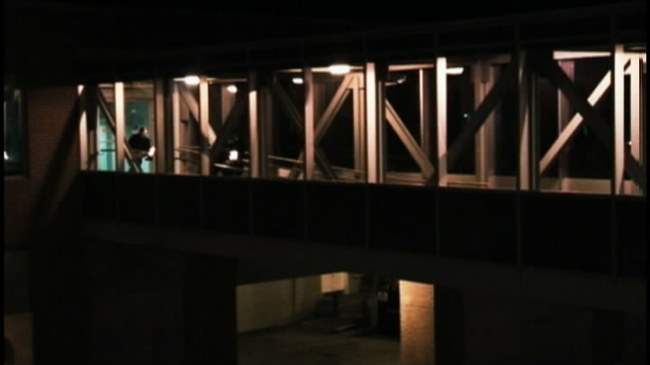
Toronto Cybercide works best in darker, shadow-filled scenes such as the shot above. A Noir look is a useful way of getting around technology shortcomings. More problematic though is the lack of exploration of the dynamics of the world itself. On Kovacs and Hookway’s commentary, they mention the concern in spending too much time on expository scenes. While I agree with the concern, this isn’t the only way the technology impacts on society can be conveyed. Character explorations and build-ins to the scenes themselves provide the grist for world building. Case in point – early in the film, our detectives do the traditional intro talk with the police chief. This would be a great scene for providing insight on how a police station might work differently in a cyberpunked world 100 years from now - instead, we get the chief typing away on a keyboard while staring at a CRT monitor. How about an earpiece, possibly an eye cover, and a VR glove where the police chief is interacting with a large flat screen? We wouldn’t even need to see the flatscreen to get a sense that things are different. If this makes no sense due to degredation in the technology, I’m sure that there could have been some way of conveying difference in surroundings here, without resorting to high-tech FX.
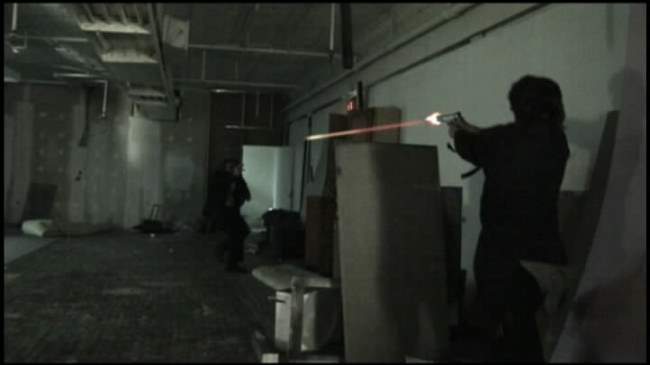
UCF Toronoto Cybercide - When Good Cyborgs Go Bad: The underlying challenge involves a specially trained marshall cyborg (the Nemesis) infected with a signal contagion. This contagion creates a complex dynamic where the Nemesis’ human portion is working hard not to allow the infection to spread, while at the same time, he is no longer in control of his actions. In an environment where we see a continual merging of man and machine, its only a matter of time before issues like this become a concern. The psychological aspect of an augmented person losing a battle over his humanity is definitely something that should require more examination. While not as explored as I much as I would have liked, the idea here is top notch, and definitely separates Toronto Cybercide from the bottom of the barrel cyberpunk flicks which don’t bother with interesting storylines.
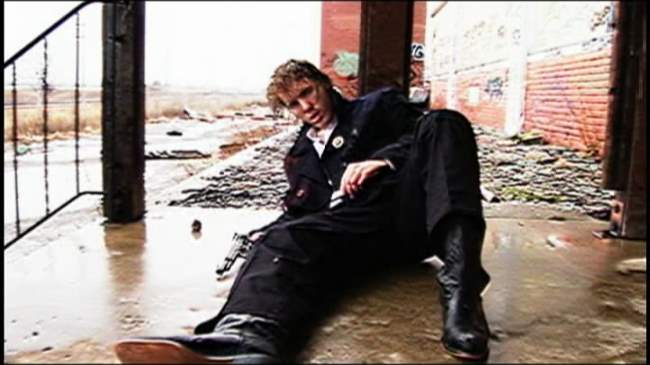
The Bottom Line: UCF: Toronto Cybercide provides us an interesting, no-budget cyberpunk flick. I can only imagine the amount of decidation that goes in to a project such as this - in many instances this clearly shows. In some places, such as the “mood” moments, it clearly excels. Every now and then, you find a scene where everything comes together - the sound, visuals and acting have moments of riviting clarity. Some of the cinematography decisions, the pacing, the music and some fun dialogue lines serve to create a fun watching experience. Moreso, the 70s cop cyberpunk idea works. However, there are many areas where significant opportunities for improvement can be realized. If a sequel is enacted, a better explanation of the world is necessary, along with a better way of hiding current technologies. More important though would be a dramatically improved sense of consistency in the sound and visuals crafting. This more than anything else gives would move Key Pixel Productions from amateur status to that of a professional, low budget production house. Regardless, UCF: Toronto Cybercide is still a fun watch, one that I recommend you pick up. Please support this amateur cyberpunk flick and pick up a copy so that we end up with a sequel at some point.





Comments
November 16, 2006
Andrew "Boter" Hookway said:
Wow, thanks a lot for the review! I’m very appreciative that you first of all took the time to look at this, and then that you wrote out a review that is so in-depth. I’ve already spoken to Laszlo about some of the aspects you’ve mentioned (such as prevalence of turn of the century items), and if a continuation is made - no guarantees, anyone, don’t get excited yet - then such things will certainly be explained.
I’m thrilled that you understood the plot so well, especially when you seemed to be missing some of the background that was given about the world, and some that I realize isn’t in there that should be. It’s a testament to the strength of the plot, if nothing else.
I believe that the biggest thing that has to be realized is that UCF: Toronto Cybercide is post-cyberpunk. I don’t claim to have any sort of expertise on this terminology, but I envision the world from 2050 (“Advent of Active Sympathetic Neural Implant (ASNIm) triggers creation of the Over/Sphere.” No, you weren’t expected to read everything, rather just get flooded with information, then get hit with the next bit…) to 2078 (“SPHERE WAR.”) as being cyberpunk, definitely. More and more people had electronics in their heads, there was a virtual realm that pervaded the world… and then it went away. Global chaos and all that - and though it’s not in the movie, some of our apocryphal documents and ideas for the world state that civilization crashed and is coming back up, salvaging what they can from before the pre-automation days.
A lot of this, I realize, is missing from Toronto Cybercide; there’s a fine line to walk between giving information about the world and pounding it into a viewer’s skull relentlessly. We may have erred on the side of caution, but as long as the movie is enjoyable, and the plot is understandable, I consider it something of a success.
(By the way, the ultra-loud high-pitch sound was on purpose - characters with an implant react to it directly, and Jam states its existence as “just a fucking signal” near the beginning. I knew we’d catch flak for that one…)
Thanks again for the review!
SFAM said:
Hi Andrew, thanks for stopping by, and more importantly, for pouring your soul into an independent cyberpunk flick! It’s truly terrific that you have a cast of folk devoted to this, and I am really looking forward to a sequel. More exciting is this very interesting world you have set up that you can continue to explore. The way low budget independent films really “make it” is by having some terrific thoughts behind them - its amazing the number of high-FX productions that lack any sense of originality (The Island, anyone???).
Regarding the devolvement of an advanced society (your post-cyberpunk discussion), I’ll still have a bone to pick with you if devolvement means going back into a previous era’s technology. I would ask you to spend some time imagining a world where technology was advanced, and then was largely ematiated. In all likelihood, it will still be very different from what came before (this would also be more interesting if that were the case). Yes, there will certainly be a mixture of carryovers and backslides, but chances are, there will be some interesting pockets of high-tech stuff that works well, and other things where nothing exists. Case in point - if the world is largely screwed, how is it that there is a working landline phone system? Third world countries, for instance, are completely bypassing the landlines and going wireless. If civilization crashed and is now emerging out of the ashes, it would make far more sense to invest in a wireless communications structure for the same reason that Zambia does. More interesting though would be holdovers from a time long since past in your future, but which would still be unique in “our” world. One can envision some nanotech artifacts for instance, similar to Stephenson’s Primer in the Diamond Age. These artifacts would certainly be an opportune crime target, one which I could imagine Laszlo’s character coveting. Regardless, your advantage over a “traditional” post-apocalyptic world is that there was this future society you can draw from - it would be great to see this more in the sequel
About the post-cyberpunk thing, I think I get what you mean. But regarding the term itself, this term is a personal hang-up for me, in that everyone has a COMPLETELY different definition for this term. Your usage of it indicates something more closely resembling post-apocalyptic, only that the world was advanced in cyber terms prior to the apocalypse. This definition of post-cyberpunk is completely at odds with Lawrence Person’s, for instance (the guy that coined this term). My own perspective is that the term itself is almost completely devoid of meaning. I have a rant on this, and also have a thread or two in the meatspace about the use of the term.
Regarding the high-pitch sound being intentional, um, yeah. Baaaaad decision (flack provided!). Most of your use of sound FX were great - this decision merits the opposite judgement. I’m just happy I wasn’t wearing headphones!
Andrew "Boter" Hookway said:
Yeah, it’s about a 50/50 split on that. Likely something physiological… doesn’t discomfort me in the least, but then I’m odd like that and will probably be deaf by the age of 35.
As far as futuristic technology goes, we’re hoping for more of a budget if we give it another go-around, so certainly, as I mentioned 2050 as a date up there, we’re going to try for a more even spread of stuff between the early 2000’s and mid 2000’s. However, your original comments on how to disguise props with creative camera angles will also be taken into account.
Neither do I know how much retconning we’re willing to do; landline phones were probably easy to set up, so they’ll likely exist in some limited fashion as society claws its way back up.
Okay, I’ve said my fill. Thanks again for the pointers and review!
Laszlo Kovacs said:
I can go for days detailing the origins of UCF, since it’s a combination of many leftover ideas, but suffice to say that it was the first time I was so taken by a challenge that I was writing down the screenplay and the background documents at the same time. The test with fan films is trying to participate in a well regarded continuity fully knowing that you can never match the original’s production values. The continuity was tailored to take advantage of what we’d readily had or would be willing to push ourselves to get; for example I had no CGI artists so hover cars and the like were not an option. (Hence the ‘100 years the present’ phrase.)
Interestingly, though the Toronto Cybercide plot was your standard good cop/cyborg gone bad, readers of the screenplay were taken by the world and the background as much as the primary characters. From a funny point of view you can say we made a fan film of our own continuity and trying to squeeze in references to a bigger world outside the walls with little props and casual remarks was a fun process.
You can be sure that we’ve taken the lessons we’ve learned in TC to heart and look forward to keeping our team and our fans on the edge.
SFAM said:
Hi Laszlo, just a comment on the good cop gone bad thing. I actually was very impressed with the underlying story of the “cop gone bad.” In this sense it wasn’t your regular, “I got jaded with my job and want to fuck over the world” thing we normally see in this. Instead, the virus rationale linked in well with the rest of the state of the world, while at the same time, adding some real depth to the bad cop’s actions. In this sense, you took a standard convention but breathed some interesting new breath to it. Kudos for that!
July 21, 2007
Mihaly said:
SZIA Laszlo!!! Nice to see another Magyar on here. Thinking about writing anything based in Hungary? I would think Hungary would make a great setting for a cyberpunk movie, but thats just me.
Laszlo Kovacs said:
I agree Hungary would be an excellent location for a cyberpunk story; it being the crossroads for so many cultures it makes a certain amount of sense to have it also be a ‘covergance’ of past and future.
It’s funny really… Toronto always stands in for other cities in movies, like New York. Budapest is the same, standing in for Moscow. I’d like Budapest to really be budapest one of these days, even if I have to be one to do it.
July 23, 2007
Mihaly said:
I agree with you about Hungary standing in for Russia. Hungary is so dark, and beautiful, and a sense of convergence of past and future would be great in tieing events from the past, into events in the future in a cyberpunk theme. One idea would be the Cyberpunk version of Sandor Petofi……..perhaps make a statement about the world today, in the setting of the future? I dunno, but i too would like Budapest to be Budapest one of these days too. Btw i live in Charleston, SC, isn’t that sad
August 26, 2007
Bryan Patrick Stoyle said:
Hi there. I just wanted to write and say thank you for the review of our film. I know it’s several months after the fact, but better late than never. I hope you don’t mind I put a section of the review (cited, of course) up on my acting website.
One note I might as well throw out for the heck of it, would be an explanation for my character eating actual food. As Andrew mentioned before, there were a lot of things that were not clearly stated in the film for the sake of pacing, brevity, etc. One of those things was the concept of the Marshals. This may be giving something away, but from what I’d been told before filming, was that the Marshals were more along the lines of humans who were enhanced with nanotechnology, but for the most part had functions of human beings still. They still breathed and ate (and I would assume use the bathroom :p) like any other human would. Hope that clears a little bit up.
February 7, 2008
kenryoku_one said:
I thought Cash was the best character. I liked the “You’re Bait” line though I did actually groan at the Matrix Reloaded nod.
A few questions:
I thought he went to catch or kill the Nemesis, why was he shooting at the police?
What was he eating out of the glass?
What was going on behind the glass in the interrogation rooms? It looked like someone was getting beat with a stuffed animal…
All in all I think you guys did an excellent job considered the budget(or lack thereof).
February 8, 2008
Kovacs said:
And even worse Matrix nod was that I was going to wear the same shiny red Merv shirt as well… goods thing we liked it better on Jazz, eh? As for your questions:
- Cash was trying to scare them off, originaly, but after he realized it was Sue & James he was shooting at them for pure fun.
- In real life they were gummy octopi form Fear Factor Candy. They tasted exaclty like lemon gummi bears, but no one else wanted to try…
- Story wise the gal was with Vice Squad interrogating an ‘Organ Pirate’. In real life Jess & Gord were just goofing off, not knowing when the cameras were rolling half the time, and Gord was being beaten with a hat. At one point Jess was waving around a carboard lightsaber from a busted Star Wars movie stand. It was too funny not to keep in.
Thanks for the support!
Com Wedge said:
How do I get a copy in Australia. Is there a way to purchase directly from you? If I like the film I’ll put a link to your site on ours.
Without having seen the film well done for doing this without a budget. I’m trying to put a cyberpunk film together now for around $100,000.
Wish me luck and give me lots of tips
comwedge@gmail.com
Cheers,
Com.
Kovacs said:
You can get it either on Amazon:
http://www.amazon.com/UCF-Toronto-Cybercide/dp/B000JJSDEW
or CreateSpace:
http://www.createspace.com/Store/ShowEStore.jsp?id=218308
Good luck with your film! Best tip I can offer is: feed your crew! Nothing beats a warm meal while watching the dailies/rushes.
February 19, 2008
Berserkr said:
Looks like they have also released it to the web
http://thepiratebay.org/tor/4018860/UCF_Toronto_Cybercide
February 27, 2008
DAVID GUIVANT said:
Awesome, that’s the spirit mate !!
January 1, 2009
Bax said:
Would just showing one flickering neon light at night would have hurt? : )
SFAM’s criticisms are dead on, both on the cons as well as the pros. However the setting and production value is comparable to Total Recall 2070, which is saying a lot considering that series actually had money and professional actors. In the end, good job guys for making a fine film and I look forward to your sequel in 09!